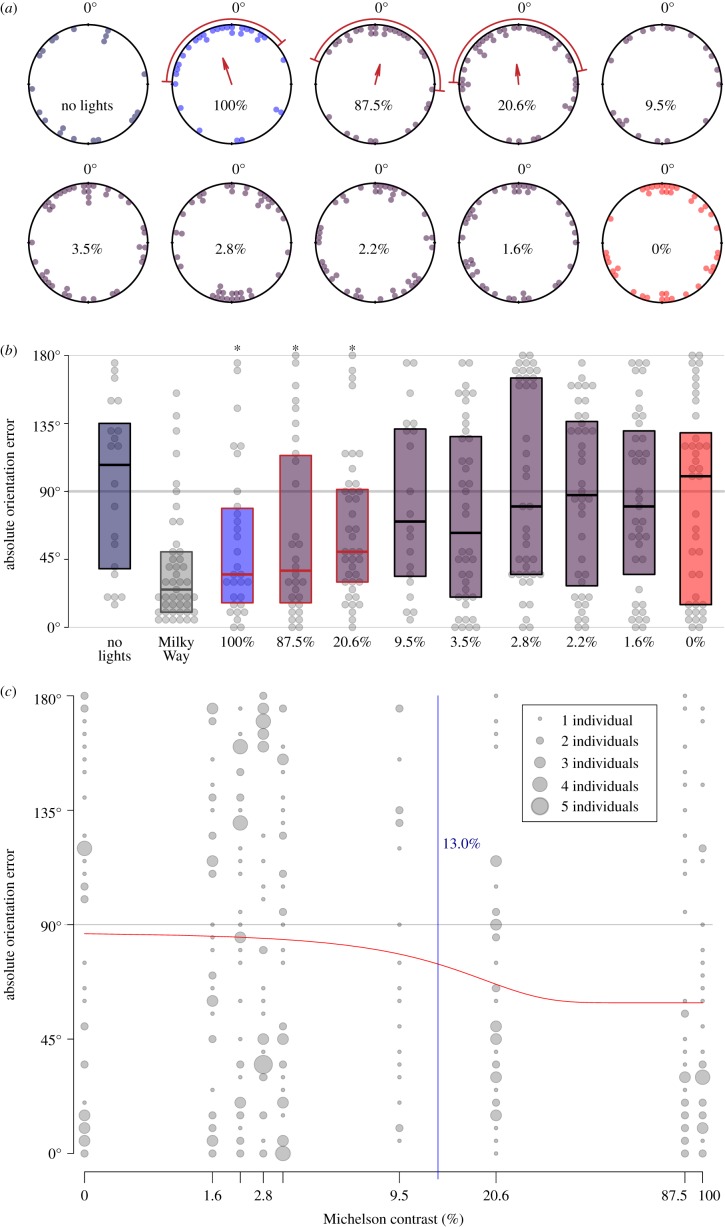Figure 6.
A comparison of directedness under different levels of Michelson contrast between the two halves of an otherwise symmetric band. Significant unimodal orientation (mean orientation error = 0°) was lost at between 20.6% and 9.5% contrast, but, with the exception of the 3.5% and 2.8% contrast conditions, this error did not become significantly bimodally oriented until contrast was less than 1.6%. Median absolute orientation error increased as a function of decreasing contrast, reaching a peak at around 90° for contrasts of less than 3.5% and for the ‘no lights’ condition. These results indicate that sufficient contrast is vital for oriented behaviour under a zenithal band of light. Orientation errors recorded by Smolka et al. [18] for beetles with a full view of the Milky Way shown for reference. (a) Orientation errors for each individual under each condition (points), shown with mean vectors (red arrow) and mean direction ± s.d. (red arc), where V tests showed significant orientation (table 1). (b) Absolute orientation errors. Asterisks denote significantly lower than in the ‘no lights’ condition (table 2a). (c) The relationship between contrast between the two halves of an otherwise symmetric band and absolute orientation error. Points show absolute orientation error plotted against contrast, on a log10 (contrast + 1%) scale. Point size is scaled to show the number of observations at each error angle for each level. The red line shows a generalized linear model fitted to the relationship between absolute orientation error and level of Michelson contrast using maximum-likelihood estimation, via a probit link that has been modified to accept a fixed estimate of upper asymptote [30], at 90°, and an estimate of lower asymptote obtained via an optimisation algorithm (minimum ≈ 59.2°). The inflection point for this curve, the point halfway between the upper and lower asymptote at which the curve's change in slope reaches zero, was selected as an estimate of the threshold level of contrast for orientation under a symmetric band.

